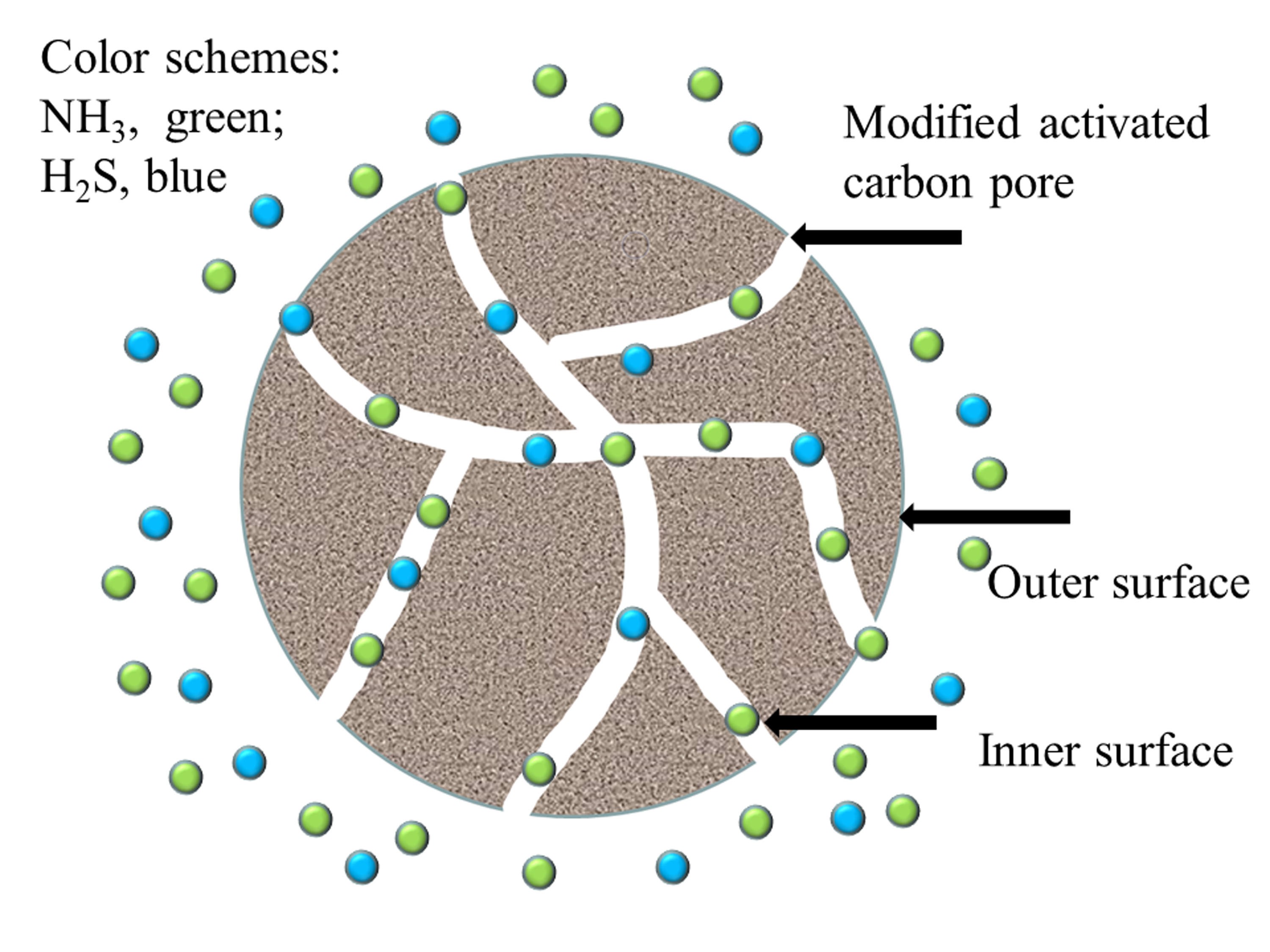- gnest_03282_published.pdf
-
Paper IDgnest_03282
-
Paper statusPublished

Ammonia (NH3) and hydrogen sulfide (H2S), as the main odorous substances in waste gas from livestock farm, have attracted more attentions rescently since their adverse effects. To remove NH3 and H2S efficiently, high-pressure hydrothermal modification (HPHM), metal salt solution impregnation modification (MSIM), and HPHM combined with MSIM are used to modify the activated carbon (AC). Meanwhile, the pore structure and surface functional groups of AC and MAC absorbents are characterized by BET, FTIR and Boehm titration method. The adsorption performance of activated carbon (AC) and modified activated carbon (MAC) are compared. The effects of modification and operation conditions on the adsorption performance of MAC for NH3 and H2S are studied in detail. It was found that the optimal adsorption performance of MAC can be achieved by high-pressure hydrothermal modification (HPHM) followed by the metal salt solution impregnation modification (MSIM). With gas space velocity of 900 h-1 and total inlet concentration of 550-650 mg m-3 at 50 oC, the adsorption capacities of NH3 and H2S of GS270CuCl6010 are 24.17 mg g-1 and 26.20 mg g-1, respectively. The adsorption of NH3 and H2S by MAC is the result of both physical adsorption and chemical adsorption.
Total file downloads: 25